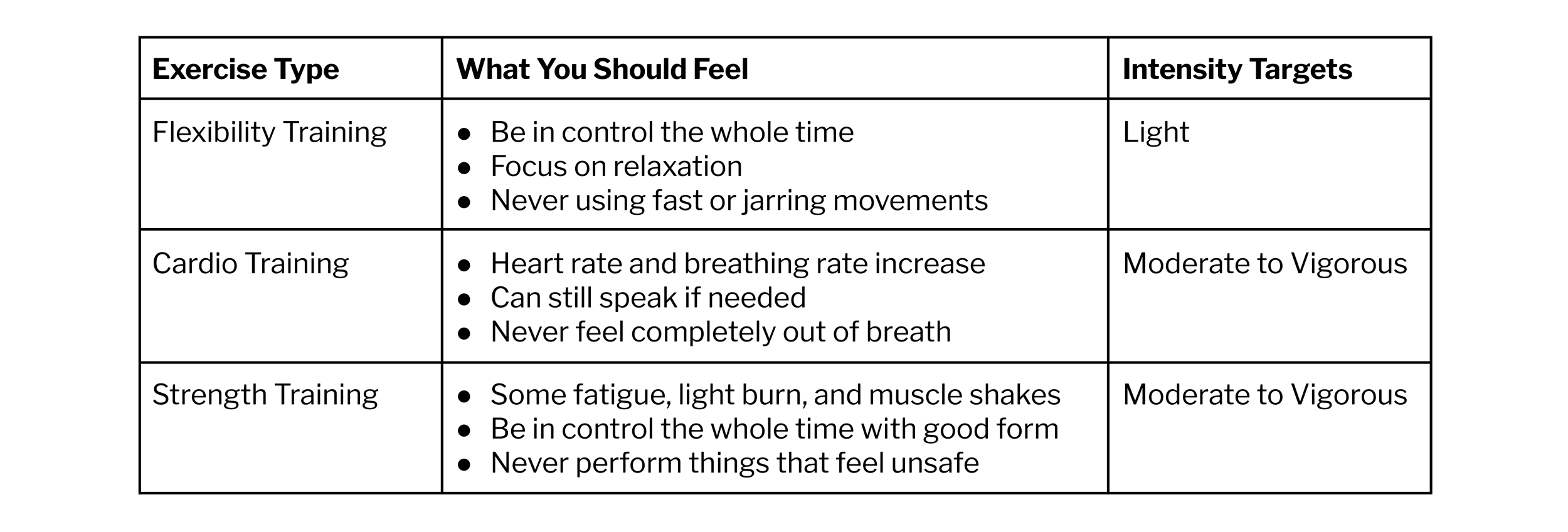LOOKING TO JUMPSTART YOUR FITNESS JOURNEY? WE’RE HERE TO HELP!
1
Learn. You’ll find lots of info on fitness, exercise, and your health.
2
Practice. Follow the tips and advice from our fitness experts.
3
Let us help. Track your goals together with a Fitness Coach.

What You’ll Learn About Exercise Basics
Expert Guidance Along the Way
-
Brendon Rearick, CFSCFitness Program ManagerBrendon is the Fitness Program Manager at Crossover. His drive to be the best version of himself led him to co-found Certified Functional Strength Coach, a fitness education company to certify trainers, for which he travels and coaches for often. Brendon holds a degree in Kinesiology from the University of Massachusetts Amherst.
-
Emily Jennings, CFSC, FSTFitness CoachEmily is a Certified Strength Coach and earned her Bachelor's degree in Exercise Science from Lindenwood University, where she played volleyball on scholarship. Always curious and wanting to learn more, she attended a Fascial Stretch Therapy course and many other courses that enabled her to help people move even better and feel great.
-
Jonathan Polidoro, CFSC, CSCSFitness CoachJon is a Fitness Coach at Crossover who earned his Bachelor’s degree in Physical Education from West Chester University of Pennsylvania. He has extensive experience helping workers balance their hectic and stressful schedules with fitness and biometric testing. Jon believes fitness should enrich someone’s life, not consume it.






 Each time you exercise, you’re challenging your body to improve in a specific way. In order to get the full benefits of that workout, your body also needs time to recover and heal properly. More rest days are needed when you exercise at a high intensity. And if your workouts are less intense, your body needs less time to rest. When you’re building your plan, always remember to make time for rest days. They will help you reach your goals.
Each time you exercise, you’re challenging your body to improve in a specific way. In order to get the full benefits of that workout, your body also needs time to recover and heal properly. More rest days are needed when you exercise at a high intensity. And if your workouts are less intense, your body needs less time to rest. When you’re building your plan, always remember to make time for rest days. They will help you reach your goals.

 Occasionally, vigorous workouts are okay to do. Pushing to the point of exhaustion does have its benefits. However, like with any skill you’re learning, you want to ramp up to the harder levels gradually. For example, if you’ve never done more than walk on a treadmill, don’t expect to be able to sprint on it for 45 minutes out of the blue. When leveling up, always choose a workout type that you’ve done before at an easier effort level. Also, make sure that you support the increased effort with better sleep, nutrition, and other recovery strategies.
Occasionally, vigorous workouts are okay to do. Pushing to the point of exhaustion does have its benefits. However, like with any skill you’re learning, you want to ramp up to the harder levels gradually. For example, if you’ve never done more than walk on a treadmill, don’t expect to be able to sprint on it for 45 minutes out of the blue. When leveling up, always choose a workout type that you’ve done before at an easier effort level. Also, make sure that you support the increased effort with better sleep, nutrition, and other recovery strategies.